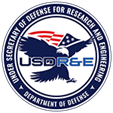
Opportunity Details
TW-2023-125
Joint Federated Assurance Center (JFAC)
Jan 9, 2023 ET
Feb 1, 2023 ET
Closed
Open
1 Attachment
To find out more information about this Opportunity, please signin or register for an account.More Opportunities
No additonal Opportunities were found.

JFAC Automated, Enterprise Scale, Assurance Case Framework
Opportunity Summary
Description
ADDITIONAL INFORMATION
Submission Deadline:
ORGANIZATION:
Figure 1 Definitions of Trust and Assurance
JFAC’s vision is to build trust through holistic assurance. Holistic assurance is the comprehensive, traceable, and composable connections across hardware and software components that comprise a system, aggregation across the system of systems, and linked to mission impacts and effects (see Figure 2).
Holistic Assurance
Figure 2 Holistic Assurance
BACKGROUND:
Figure 3 JFAC's Federated Data Enabling Holistic Assurance Approach
PROBLEM STATEMENT:
Technology Gaps:
- Holistic: Maximizing the discovery of vulnerabilities within components across the life cycle (including supply chains), linked to system and mission effects, and aggregated across the DoD portfolio of all-domain system-of-systems.
- Persistent: Continuous evaluation of enterprise risks, integrating new knowledge and insights as discoveries occur across the digital ecosystem, for the purposes of migrating from reactive issue management towards proactive risk mitigation.
- Comprehensive: Aggregation across various data-sets, domain knowledge, root-cause corrective course of action recommendation, and diverse set of risks across categories above program-level towards enterprise, national, and global risks.
- Contextualized: Adding context surrounding issues that require decisions to combine both qualitative (subject matter experts) and quantitative (data/analytics) information in a framework of evidence traced to arguments and claims supporting an assurance case, where the credibility is based upon the strength of the evidence and underlying sources.
- Automated: Minimization of manual
workflow process towards automation in support of decision-making at the speed
of mission.
DESIRED END STATE:
MARKET RESEARCH:
JFAC is collecting market research to establish a potential FY23 pilot demonstration project by first assessing the current state of the art enterprise assurance technology landscape that addresses some or all of the aforementioned technology gaps.
Capability Description: brief description of the assurance technology, identify any novel innovations associated with the approach, current technology maturity (Technology Readiness Level 1-9), potential DoD enterprise value proposition, current technology adoption within the DoD or intelligence community (technology project level, program-office system level or enterprise level), and future scalability of proposed solution.
Acquisition Pathways to Capability: identify how the government has or can currently procure your assurance technology:
- Commercial Items (TRL 9) via software license procurement
- Prototype or actual system being qualified through test and evaluation (TRL 7-8) via FAR-based contract
- Component/subsystem/system prototype and demonstration (TRL 4-6) via Other Transaction Authority (OTA) contracts
- Research phase, basic or applied research (TRL 1-3) via grants, R&D agreements
End State Roadmap: long-term roadmap with transition and scaling towards enterprise adoption with supporting rough order of magnitude (ROM) cost estimates in an idealized unconstrained resource environment across a five-year timeline or longer, if needed.
HOW YOU CAN PARTICIPATE:
Requesting industry to provide responses through an initial phase of submission. Responses shall be limited to no more than 4 pages of content plus an additional cover page:
- Cover page (1 Page)
- Capability Description & Acquisition Pathways to Capability (3 Pages)
- End State Roadmap (1 Page)
Point of Contact
Name
Brian Nowotny
brian.m.nowotny.civ@mail.mil
Title
JFAC Director
Phone
Not Provided